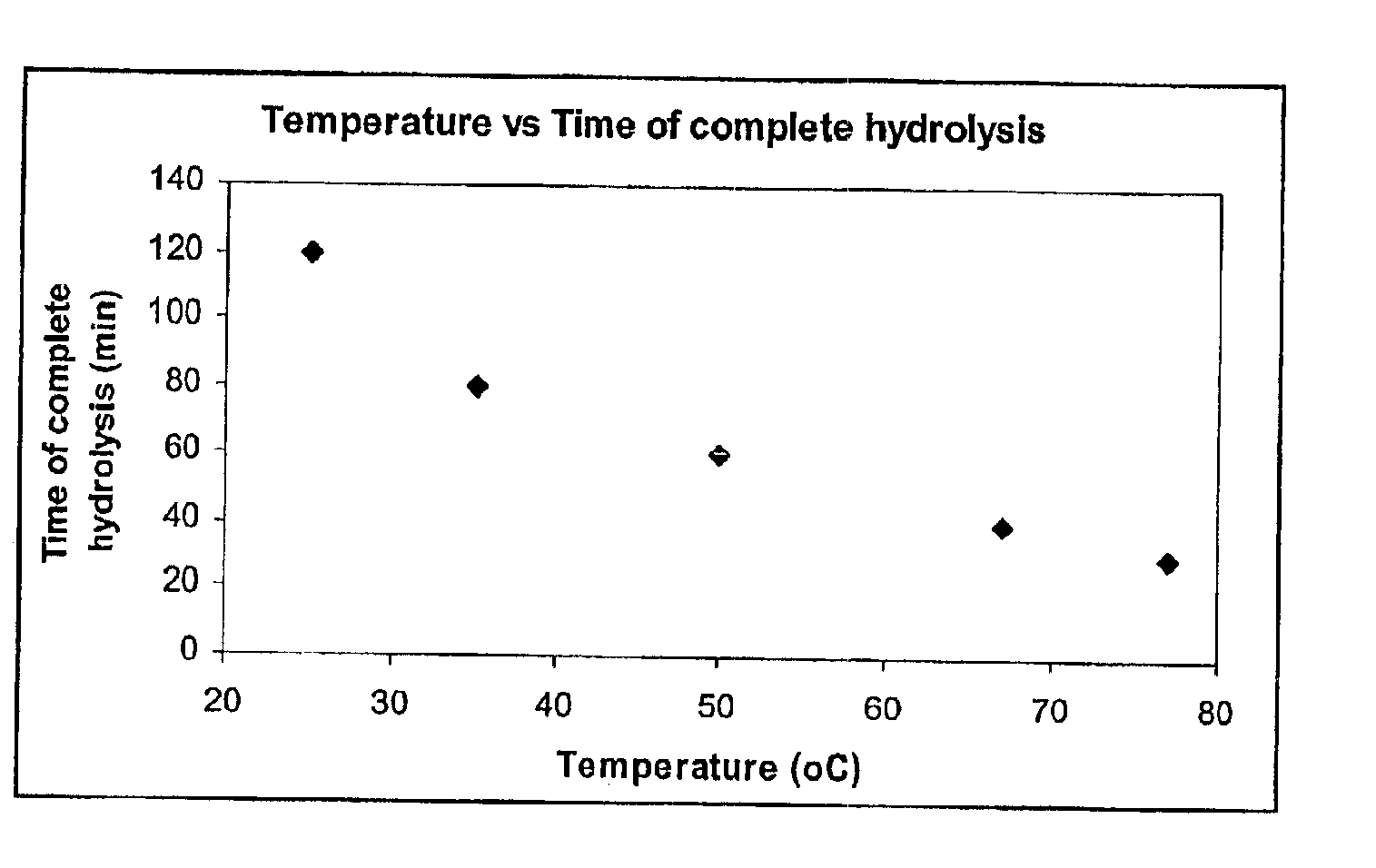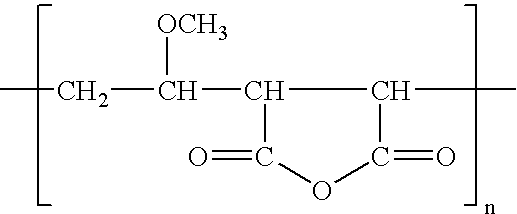Modified membranes
a technology of membranes and modified membranes, applied in the field of porous membranes, can solve the problems of macrovoids that cannot be produced, solution becomes thermodynamically unstable, and demixing occurs, and achieve the effect of increasing stability
- Summary
- Abstract
- Description
- Claims
- Application Information
AI Technical Summary
Benefits of technology
Problems solved by technology
Method used
Image
Examples
Embodiment Construction
Production of Flat Sheet Membranes
[0078]A dope solution was prepared according to the following formulation:
[0079]
PVDF17.1 g (17%)LiCl3.54 g (3.5%)PVP / VA S6302.73 g (2.7%)Gantrez3.09 g (3.1%)NMP74.3 g (73.7%)100.76 g[0080]PVP / VA S630 is polyvinylpyrrolidone / vinyl acetate copolymer[0081]NMP is N-methyl pyrrolidone
[0082]All ingredients were added together and the dope solution was allowed to mix on heated rollers (50° C.) overnight. Once removed from the rollers, the mixture was left to settle (to remove any bubbles from the solution) for half a day.
[0083]The dope solution was cast onto a glass plate (which was notably hydrophilic) using a glass rod and a membrane was cast by immersing the glass plate into a precipitation bath consisting of:[0084]45% PEG-200[0085]45% H2O[0086]10% NMP
[0087]The membrane was immersed in the precipitation bath for 10 minutes (until the membrane was able to be “peeled off” the glass plate).
[0088]The membrane was divided into equal propo...
PUM
| Property | Measurement | Unit |
|---|---|---|
| pore sizes | aaaaa | aaaaa |
| pressures | aaaaa | aaaaa |
| critical surface tension | aaaaa | aaaaa |
Abstract
Description
Claims
Application Information
 Login to View More
Login to View More - R&D
- Intellectual Property
- Life Sciences
- Materials
- Tech Scout
- Unparalleled Data Quality
- Higher Quality Content
- 60% Fewer Hallucinations
Browse by: Latest US Patents, China's latest patents, Technical Efficacy Thesaurus, Application Domain, Technology Topic, Popular Technical Reports.
© 2025 PatSnap. All rights reserved.Legal|Privacy policy|Modern Slavery Act Transparency Statement|Sitemap|About US| Contact US: help@patsnap.com



